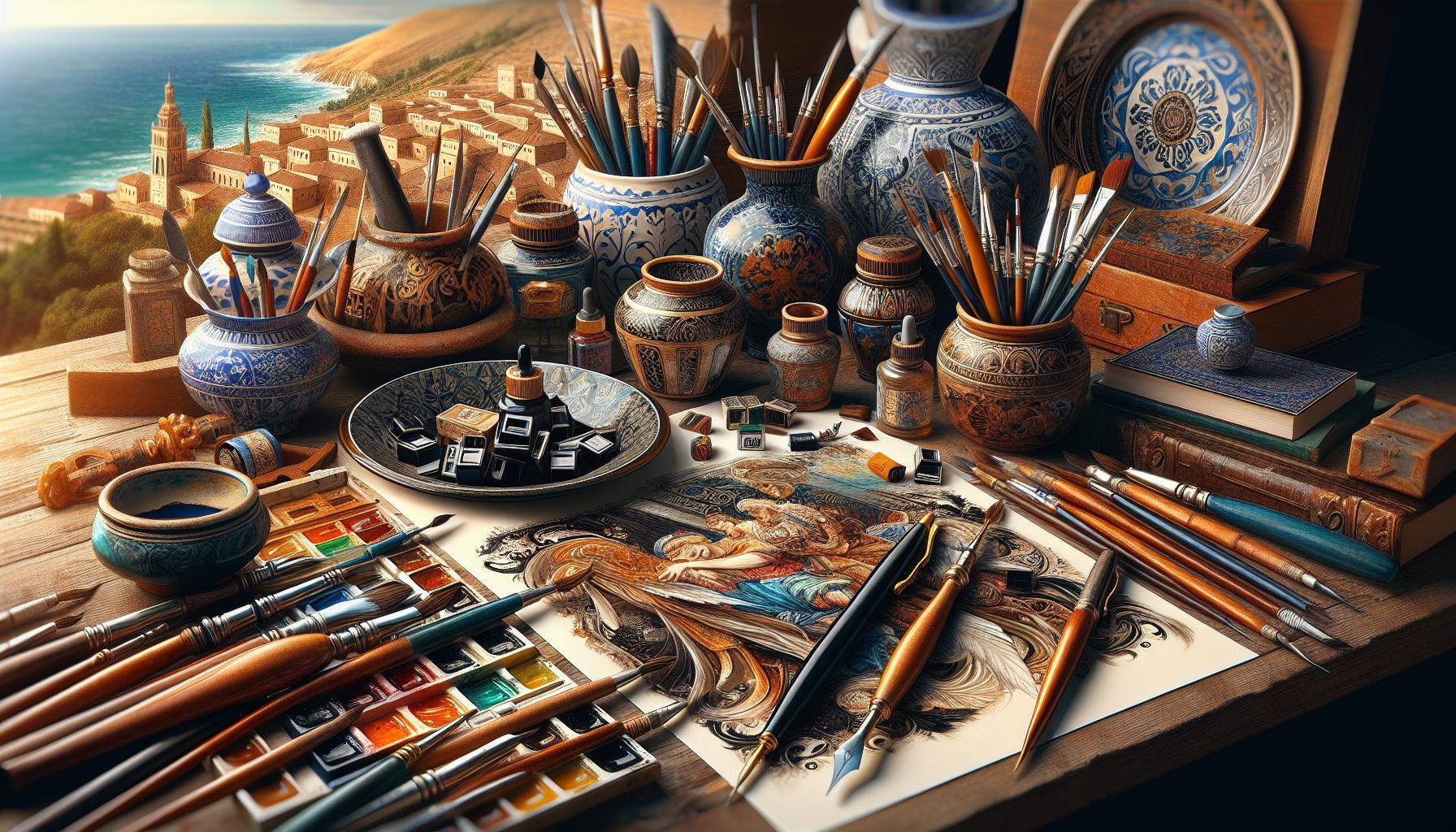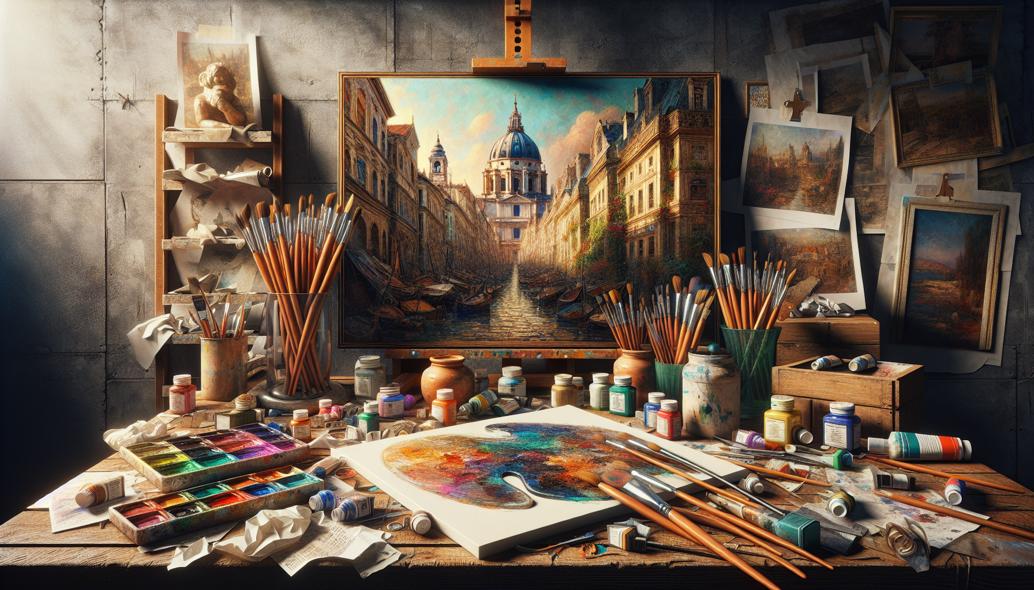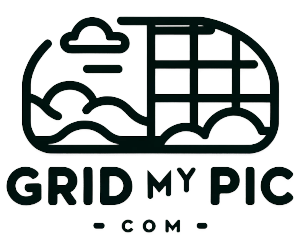How to Create Rich Texture in Mixed Media Art with Pen, Ink, and Watercolor
Dive into the magical realm of mixed media art, where pen, ink, and watercolor unite to craft deep, textured masterpieces. Discover essential techniques to enrich your creative storytelling on canvas!

Exploring the Art of Creating Rich Texture in Mixed Media
Creating art is not only about depicting scenes or emotions; it’s also about exploring and manipulating the materials to tell your story on the canvas. Mixed media art opens a world of possibilities, allowing artists to combine different materials like pen, ink, and watercolor for compelling, textured results. This article will explore the interplay between these mediums, focusing on how to create rich textures to add depth and dynamism to your artwork. Prepare to dive into the world of mixed media texture, discovering expert techniques to elevate your craft.
The Essentials of Mixed Media Texture
At the heart of mixed media art is the exciting interaction between diverse materials such as pen and ink techniques combined with watercolor texture. The magic of mixed media lies in the delicate balance and harmonious blending of these elements, where distinct textures can add incredible depth and intrigue. Whether you’re a seasoned artist or a novice exploring this avenue, understanding the fundamental aspects of texture is crucial. Mixed media texture adds visual interest, guiding the viewer’s eye across the artwork, encouraging engagement, and conveying complex narratives.
Start With Strong Foundations: Paper and Tools Selection
The creation of rich textures begins with choosing the right paper. Heavy watercolor paper is often recommended as it can accommodate the wet application of watercolor without warping and provides a strong base for ink and pen work. Look for cold-pressed paper for a rough texture that will add an extra dimension. Your tools should also include a variety of pens with different nib sizes for diverse line work and an array of paints for watercolor washes.
Pen and Ink Techniques for Intricate Details
Pen and ink are quintessential for introducing intricate details and defining elements in your mixed media creation. These techniques offer precision and contrast, acting as a framework that guides the rest of your creative process. Consider stippling, cross-hatching, and contouring, as these can add layers of complexity and interest. When combined with watercolor, these methods can result in breathtaking textures.
Stippling: Building Texture with Dots
Stippling involves placing countless dots across the surface to form shapes and gradients. This technique is painstaking but highly rewarding, imparting a sense of depth and volume when viewed from afar. You can create subtle transitions or bold contrasts depending on the density of the stippling, providing a robust underlayer for subsequent watercolor washes.
Cross-Hatching: Enhancing Shading and Tone
Cross-hatching employs intersecting lines to build texture and shadows. This technique is excellent for creating varied shading effects, particularly useful in mixed media for its ability to suggest texture in areas that will later be overlaid with watercolor. By varying the spacing and direction of your strokes, you can simulate texture and deepen shadows without color.
Contouring: Defining Form and Shape
Contouring with pen and ink involves outlining and detailing which helps in establishing the form and movement within the art piece before applying layers of watercolor. Contoured lines can define edges, articulate changes in planes, and give form to complex shapes, making them essential in constructing the skeleton of your mixed media piece.

Watercolor Textures: Adding Depth and Flow
One of watercolor’s most appealing qualities is its ability to create soft, flowing textures. Embracing the fluidity of watercolor can bring your mixed media creation to life by adding a sense of movement and depth thanks to its transparency and light diffusion properties. Knowing when and how to integrate watercolor over your inked design creates opportunities for lush watercolor texture and enhances the artwork's narrative.
Wash Techniques: Building Background and Mood
Watercolor washes are perfect for establishing the mood and forming the foundation of your artwork's background. A wash can be a gradient, a smooth transition, or a flat color, each producing different atmospheric effects. Try employing graded washes to craft skies or moving water, permitting the ink and pen work to peek through and create a mysterious ambience.
Wet-on-Wet Technique: Producing Soft Transitions
Another invaluable method in your watercolor arsenal is the wet-on-wet technique, where you apply paint to a damp surface. This allows colors to merge and flow together organically, ideal for areas needing soft edges or transitions. It’s significant in combating the harsher lines of pen and ink, providing a counterbalance that highlights their precision with watercolor’s supple elegance.
Combining Mediums: Harmonizing Pen, Ink, and Watercolor
Mastering the art of combining mediums demands a strategic approach to layering, where each stage must complement the last while setting up the next. Begin with the ink techniques to lay down your foundational details first; this ensures that any subsequent application of watercolor doesn’t smudge or blur the line work, maintaining clarity where needed.
Working in Layers: Building to the Finished Piece
When building a piece in layers, think of it like composing a symphony. Start with your lightest watercolor washes to build a base, adjusted with ink details where needed, and progressively deepen the colors and textures. As the layers compound, richer textures develop, with each medium allowed to show its unique qualities and contribution.
Creating Depth with Mixed Media
Creating depth with mixed media involves wisely using contrasts, perspective, and texture to draw in the viewer. Effective depth conveys a sense of realism or narrative further engaging viewers. Utilize the interplay between transparency and opacity between watercolor and ink to suggest distance and proximity, integrating cooler and warmer colors to stimulate the perception of foreground and background.
Contrast and Color Harmonies
Contrast in both color and line work helps to lead the viewer's eye and develop focus areas within your piece. High contrast can offer dramatic appeal, whereas softer blends can establish a dreamy or tranquil vibe. Employ complementary colors where watercolor meets ink work to evoke depth and cohesion, making every component of your work resonate.
Perspective and Focal Points
Decide early in your composition where the focal points will reside and how perspective will be addressed. Utilize lighter toned, hazier textures to suggest distance and stronger definitions for elements you want to stand out, employing your mixed media techniques to guide this narrative through texture and color intensity.
The marriage of pen, ink, and watercolor in mixed media art celebrates the uniqueness of each medium while inviting their blending for infinite texture possibilities. Whether you're painting ethereal landscapes or detailed narratives, your work’s texture can hold as much emotion and storytelling as any subject, transforming ordinary surfaces into extraordinary experiences.
Embrace this creative synergy in your mixed media designs and transform your art with rich textures that unquestionably command attention.
